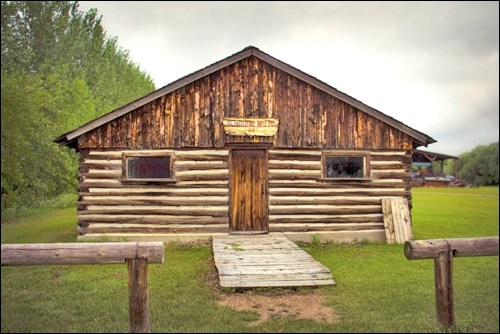Felling trees, trimming logs and erecting a log building sounds more like a story from 1902, not 1972. But it was 1972 when volunteers with the Battleford Light Infantry Historical Association picked up axes and adzes in North Battleford’s Western Development Museum Heritage Village.
The story began in 1905 when the 16th Mounted Rifles Saskatchewan-based Canadian military unit formed in the Battlefords. In 1924, three city-based infantry units were established in Saskatchewan; one was the Battleford Light Infantry. In 1958 the BLI amalgamated with Saskatoon and Prince Albert to become the 1st Battalion of the North Saskatchewan Regiment. In 1969, it became the North Saskatchewan Regiment “B” Company, headquartered in Prince Albert. Yield to None is the motto of the North Saskatchewan Regiment. Â
In 1970 while the 1st Battalion North Saskatchewan Regiment was still active in the Battlefords, construction began on a militia building in the North Battleford WDM’s Heritage Village to preserve the story of the Battleford Light Infantry and to showcase artifacts from the Colonel Otter Armoury. The Battleford Light Infantry Historical Association joined the project, completing the building in 1972. The association had formed in 1968 to preserve the military history of northwest Saskatchewan. Concluding a regimental museum was the best way to preserve artifacts and stories, it contributed volunteer manpower to construct the log building at the Heritage Village. The association also contributed artifacts from Battalion members and funds for the construction and research into people who served. Â
Militia facilities were part of several larger Saskatchewan communities in the early years of the 20th century including North Battleford. The Battleford Light Infantry building in the Heritage Village represents a building that would have served as the headquarters of the local reserve military force that included civilians and military men. Here, members of the militia unit would meet regularly to practice and train, to gather and socialize. The armoury would have held equipment and ammunition while the quartermaster’s stores would have stocked uniforms, badges, supplies and provisions.
The logs that were erected and chinked in 1972 have weathered more than 40 Saskatchewan winters. Chinking has dried and crumbled. Bottom logs have rotted and need to be replaced. The building is yielding to time and the severity of our seasons. Your purchase of a Great Escapes Vacation Lottery ticket has helped the Museum lift the structure and repair the logs. It also helps to ensure that the interior is weather-tight. The story of northwest Saskatchewan’s military service is important to preserve.




